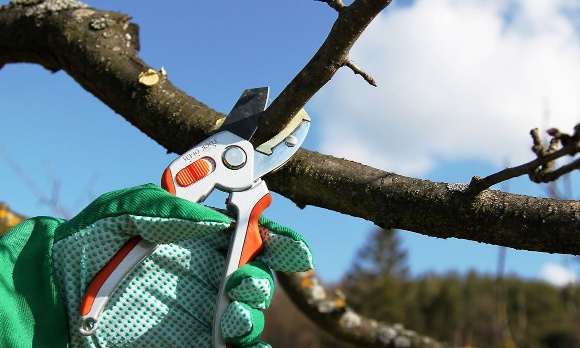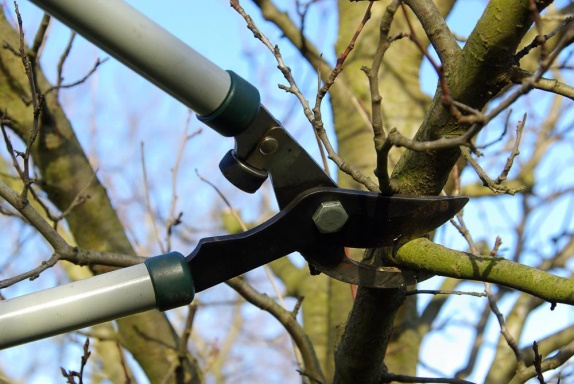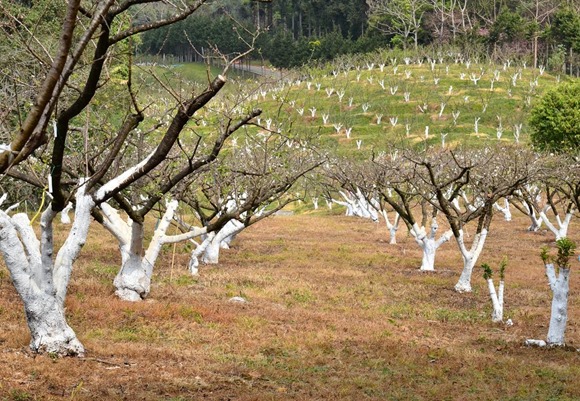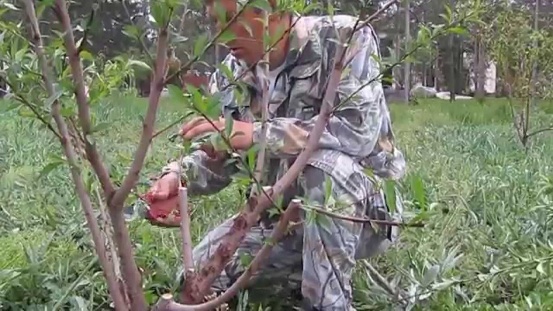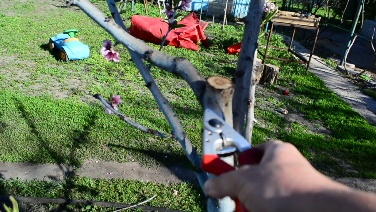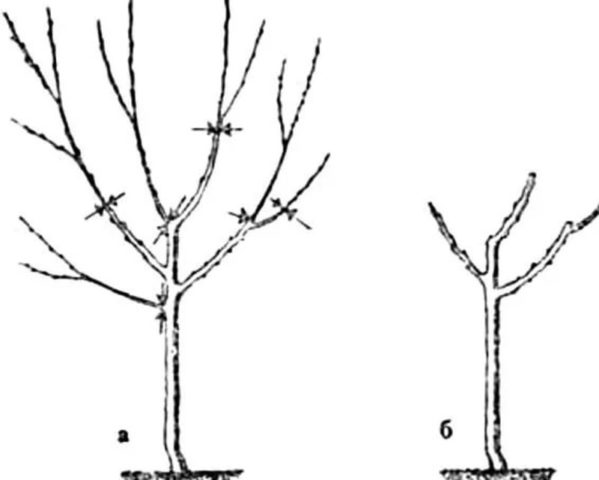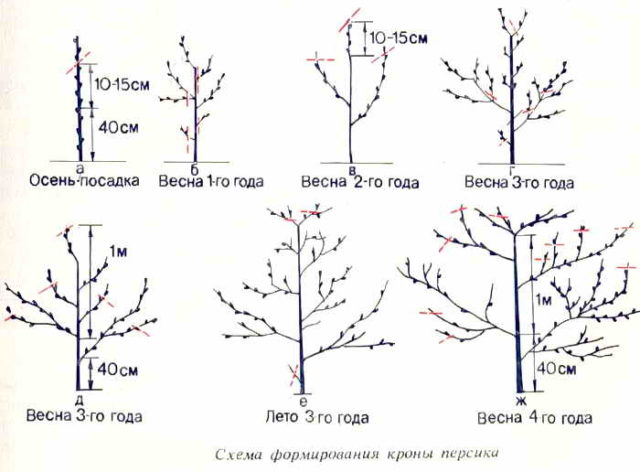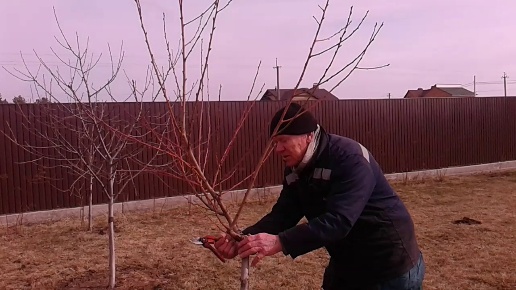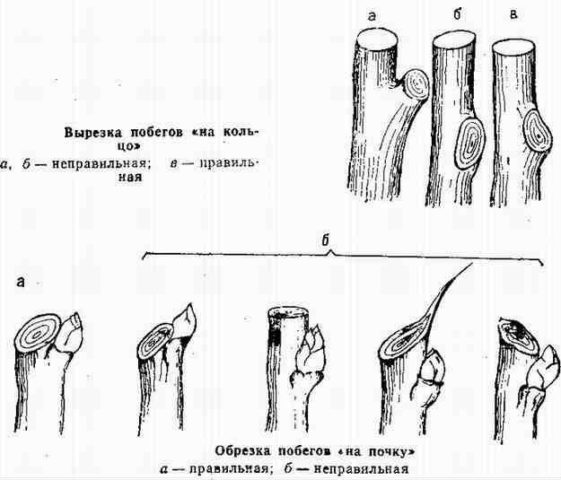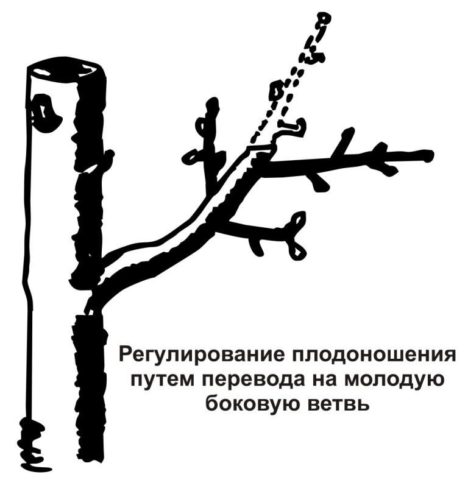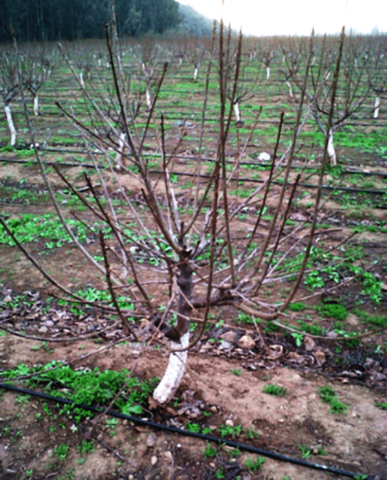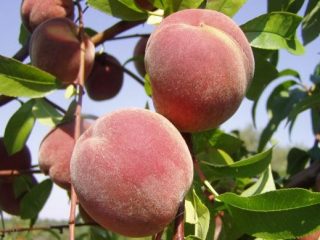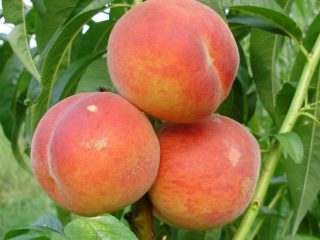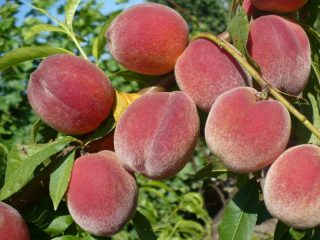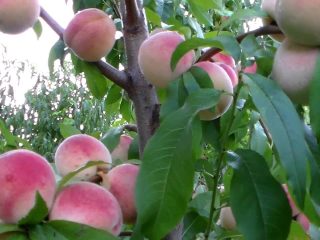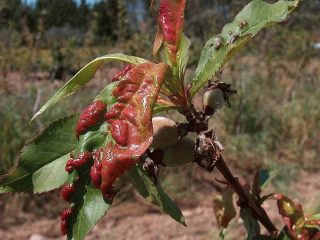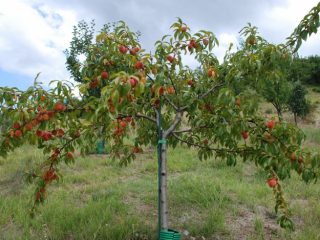Content
Pruning peach trees in the fall causes serious battles for gardeners. It is often convenient to prune trees in the fall, when the flow of sap has stopped and the plants have gone dormant. But among another part of gardeners there is an opinion that the peach is the only tree that cannot be pruned or replanted in the fall. All procedures with it should be carried out only in the spring.
In the southern regions, where peaches are grown on an industrial scale, pruning is carried out in the fall. This is more profitable from a practical point of view. There is plenty of time to carry out the operation and there is no need to rush.
When to prune a peach: autumn or spring
Due to differences of opinion, the question “is it possible to prune a peach in the fall or is it better to wait until spring” is not at all idle. In the south there is no big problem, even if the tree dies. When growing peaches in the north, it will be difficult to come to terms with the death of a seedling.
The main argument of opponents of autumn pruning of peach: the tree will not have time to heal the wounds inflicted, and they will be damaged by frost. There are even very few videos of peach pruning in the fall on the Internet. There is mainly a spring pruning operation.
But with proper preparation of the tree for winter, it is more profitable to prune the peach in the fall:
- the movement of juices has already stopped;
- the wound will have time to dry before frost;
- in the spring, the plant will not waste energy on redistributing juices through other channels after pruning and the harvest will be higher;
- all juices will immediately go to the development of the remaining buds;
- It is easier to cover an already pruned peach along with the crown for the winter than an “overgrown” one.
Peach is one of the trees that can produce whips up to 3 m long over the summer. This is another reason why in the south they prefer to prune peaches in the fall. In the spring, through the muddy mud, it will be impossible to remove these whips from the plantations. If you insulate the seedling well for the winter, then frost will not be able to damage the cut areas.
The crown needs to be shaped so that the plant remains 1.5-2 m high. In this case, it will be easy to cover the peach completely for the winter, and not just the trunk.
Why autumn pruning increases yields
The peach wakes up quite early and pruning is usually carried out on an already flowering plant. This procedure forces the plant, after pruning, to sharply redirect the juices to other buds. The pressure of sap at this time is very strong and the tree is stressed. The result of any stress is a decrease in plant yield.
If you “spare” the plant and leave it without pruning, the tree will bear many small fruits.And horizontal skeletal branches can break under the weight of leaves and fruits. This situation is well illustrated by the video on how to prune a peach incorrectly in the fall; more precisely, the video explains why you need to prune peaches in the fall and what happens if you don’t do this.
When can you prune peaches in the fall?
Pruning of peaches in the fall begins after harvesting the fruits, when the sap flow has already stopped, but before the onset of cold weather. On average this is the end of September - beginning of October. In the south, cold weather arrives much later than this time and the tree will have time to recover from the procedure. In the north, depending on climatic conditions, pruning is carried out earlier, and the plant itself is insulated for the winter.
Preparation of tools and materials
To properly trim a peach in the fall (and not only in the fall), the tools must be sharpened and free of rust. Secateurs and loppers should not break branches when pruning, but leave an even cut. Therefore, they are used only on branches of relatively small diameter.
In the fall, in parallel, not only pruning is carried out to form the tree crown, but also sanitary pruning. When sanitizing, dry and diseased branches are removed. Trees become infected not only with pathogenic fungal microorganisms, but also with a full-fledged tree fungus. If peaches can be cured from the first by spraying them with fungicides in the fall, then the second is guaranteed to kill the plant.
The mycelium of tree fungus can be introduced onto a healthy plant if, after removing a diseased branch, you immediately cut off a healthy one. Fungal spores also “sit” well on fresh cuts themselves.
Therefore, in order to properly trim a peach in the fall, you will need not only tools, but also disinfecting materials:
- solution of potassium permanganate or Bordeaux mixture;
- alcohol;
- composition for covering cuts.
Before cutting, tools are soaked for half an hour in a strong solution of potassium permanganate or 3% Bordeaux mixture. Then the instruments are removed and allowed to dry naturally. After drying, the cutting edges are wiped with alcohol. After the alcohol has evaporated, you can begin trimming the peaches.
Tools for pruning you will need:
- pruning shears with long, tightly interlocking blades. Used for cutting branches with a diameter of no more than 2.5 cm;
- lopper - an analogue of pruning shears, but with long handles that act as a lever. Use for branches with a diameter of no more than 5 cm;
- garden knife;
- wood scissors. Must be all-metal, with rounded ends of the blades. Used for cutting thin branches that thicken the crown too much;
- garden saw. For some reason it is often called a hacksaw. It has the shape of an arc and is designed for cutting the thickest branches.
After finishing the work, all sections are treated with Bordeaux mixture or a weak solution of potassium permanganate and covered with beeswax or garden varnish. If there is neither wax nor varnish, oil paint will do. The main task is to create a sealed barrier between the environment and the fresh cut and prevent pathogenic microorganisms from penetrating the wood. This video for beginners shows peach pruning in the fall.
Peach pruning in autumn: diagrams
Peaches should not be allowed to grow tall, otherwise the harvest will only be at the top of the tree. For good fruiting and ease of harvesting, crown fruits can be formed into two types:
- cup-shaped;
- in the form of a bush.
The latter is more difficult to trim and form the crown, but more convenient for harvesting.
For beginners, this peach pruning scheme in the fall is not suitable.It will be much more convenient to form a cup-shaped or improved cup-shaped crown.
The cup-shaped crown is based on two tiers of branches: the lower one has 4 skeletal branches, the upper ones have 5. The total number of fruiting branches is no more than 80.
The principle of forming an improved cup-shaped crown is the same as the first. But the branches are located closer to each other. The distance between the branches is 10-15 cm. This crown is more resistant to weather adversity. It is especially beneficial for farmers in the industrial cultivation of peaches.
With a bush crown formation pattern, the tree does not have a central shoot. The base is formed from 3-4 shoots extending from the lower part of the trunk. The advantages of this form are uniform illumination of all branches, high yield and good frost resistance.
The video shows how to prune a peach in the fall.
How to properly prune a peach in the fall
In order to properly prune a peach tree in the fall, you must first figure out which shoots are important for the further life of the plant, and which ones only interfere. Peach can bear fruit only on last year's shoots. Therefore, some of the old branches and some new ones are completely useless:
- height They do not produce fruit; when pruning, these shoots are removed;
- mixed. These shoots bear buds, from which both fruits and new shoots will grow the following year. These shoots are not removed, but sometimes they need to be shortened. They are distinguished by greater thickness than others of the same year;
- bouquet These are short (25-30 cm) fruiting shoots with clustered vegetative buds. They produce small peaches and a significant portion of the ovaries fall off. Removed from seedlings younger than 3 years old. Leave on older peaches;
- fruit. In short, bouquets.Length 15-20 cm. Contrary to the name, there is almost no harvest; the ovaries crumble. If something accidentally ripens, it will be small and tasteless. The lifespan of these shoots is 1 year. After one fruiting they usually die off in winter. There is no point in leaving them.
- tops. Side shoots coming from the trunk. They don't bear fruit. They only interfere with a healthy plant and take away juices, so the tops are removed in the fall. But if the tree froze last winter, the tops are left to restore the crown;
- summer They grow on mixed shoots in late summer. They don’t give ovaries. Since the shoots are very thin and tender, they freeze in winter.
Taking these features into account, the crown of peach trees is formed.
Pruning young seedlings
A peach is considered young until it reaches 4 years of age, that is, before fruiting begins. At this time, all operations to form the crown are carried out.
Cup-shaped crown
Formation begins in a one-year-old seedling. If the peach was planted in the spring, then the first pruning should be in the fall of the same year. The trunk of a one-year-old tree is cut to a height of 50 cm. But at the same time, make sure that there are two strong, healthy branches below. The minimum requirement is well-developed buds. The branches should be directed in directions opposite to each other.
The branches are tied to slats so that they subsequently grow at an angle of 45° to the trunk. The top bud is cut off from the side shoots. If the next year the branches have grown by 50 cm, the remaining tree trunk between them is cut down to the junction of the branches with the trunk. If the branches are shorter, they are cut to the first triple or growth bud located as far as possible from the trunk. In the remaining area, another 2-3 well-developed shoots are selected and also tied to the rail.The remaining branches are cut off, leaving only the leaf closest to the main branch.
In the third year of the seedling’s life in the fall, the skeletal branches are shortened by another third. From the remaining two-thirds, 3 shoots are selected and those growth buds that are directed downwards are removed from them. These shoots are again tied to the rail, and the rest are cut to 1 leaf. In the fourth year the harvest is already harvested.
Bush-like crown
All excess shoots of a one-year-old seedling are cut off in the fall. There should only be 3-4 lower branches with 5 growth points on each shoot. The following year, these future skeletal branches are cut back by ¼ or ⅓. The length of pruning depends on how much the branches have grown over the summer. New shoots directed downward are cut off completely. Those directed upward do not touch.
In the third year, 6-8 shoots are selected on the main branches, which will bear fruit next year. The rest is cut to 1-2 sheets. The shoots that gave rise to the main trunk in the center of the bush are also cut to 1 leaf.
How to trim fruiting peaches
When forming a cup-shaped crown in the fourth year, from the side shoots that formed during the current growing season, 3 of each of last year’s branches are selected: at the base, in the middle and at the top. It is on these shoots that the ovaries will form next spring.
The one at the base acts as a substitute; in the middle - reserve for the first; at the apex – lengthens the main branch. All other shoots are cut off: those directed upward to the second leaf, downward to the growth point.
When forming a bush-like crown, from new fruit-bearing shoots, choose those that grow at the desired angle to the trunk.Horizontal and downward-facing ones are cut off completely.
In the fifth year of life, the tree is fully formed. Afterwards, annually you need to carry out sanitary pruning and maintain the desired crown shape:
- remove dry and diseased parts;
- shorten fruiting shoots by a third;
- do not allow the peach to grow above 3 m;
- remove all thin branches if a cold, snowy winter is expected.
That is, you only need to maintain and thin out the already formed peach crown.
Anti-aging pruning of peaches over 10 years old
5 years after the peach reaches full development, the tree’s yield decreases. Therefore, after 10 years, every five-year period, the peach undergoes anti-aging pruning:
- skeletal branches are cut to the length they were 3 years ago;
- mixed branches are pruned in the same way;
- The young shoots remaining on the branches are not touched, leaving them for the future formation of a new crown.
This pruning has a very good effect on increasing peach yield.
Further care for peaches after pruning
After pruning, the peaches need to be prepared for wintering. To do this, dig up the soil under the peaches and do the last fall watering to recharge the soil with water for spring. After this, the peaches are treated against pests and covered for the winter.
Conclusion
Pruning a peach in the fall is less painful for the plant and allows you to remove in advance those parts that would otherwise freeze in the winter. Proper autumn pruning helps increase the yield and longevity of peach.
